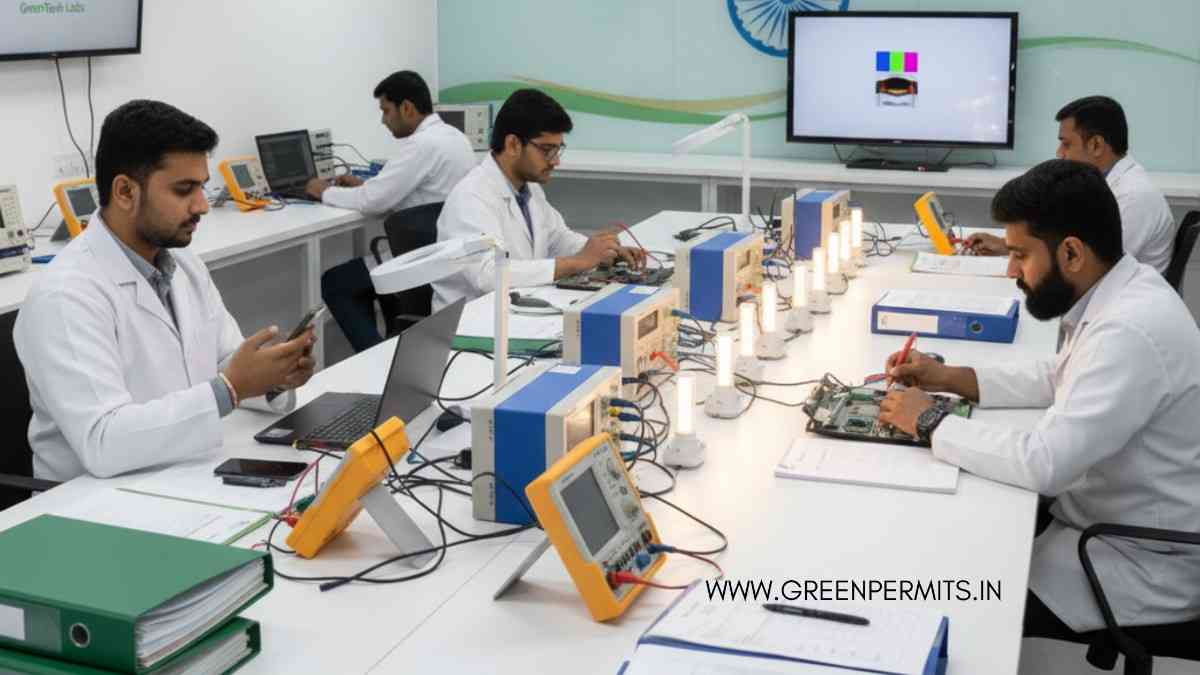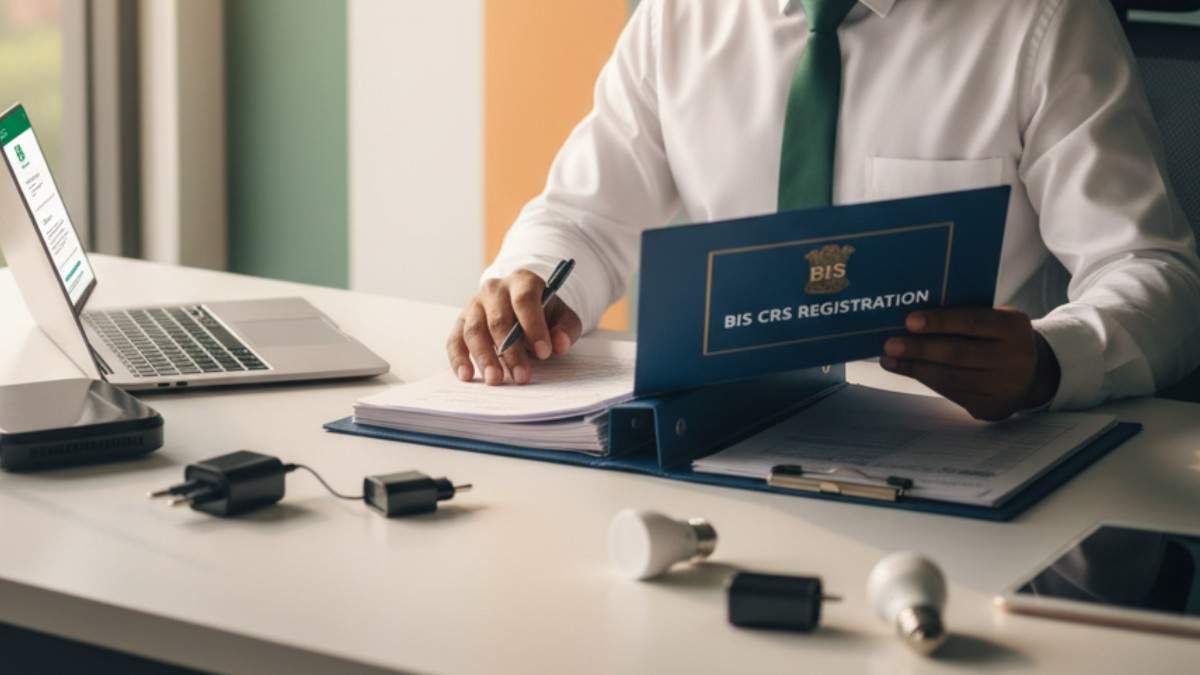Introduction – A Real-World Lesson
In late 2024, a Noida-based importer of smart TVs saw its consignment stuck at customs for two months. The reason? Their televisions carried CE marking but not a valid BIS CRS registration number. Under India’s Compulsory Registration Scheme (CRS), selling or importing certain electronic and IT products without BIS approval is a clear violation of the BIS Act 2016 and the Ministry of Electronics & IT (MeitY) notifications.
This incident is common today — as India expands its list of regulated products, manufacturers and importers must understand which electronics fall under BIS CRS and how to stay compliant in 2025.
What is BIS CRS Certification and Why it Matters
The Bureau of Indian Standards (BIS) operates two main schemes:
- Scheme I – ISI Mark Certification (for industrial and construction materials)
- Scheme II – Compulsory Registration Scheme (CRS) (for electronic and IT goods)
Under CRS, every manufacturer — domestic or foreign — must register each product model with BIS after testing in a BIS-recognized lab before selling in India.
Skipping this step can mean seizures, penalties (up to ₹2 lakh per product under Section 17 of the BIS Act 2016), and loss of market access.
Top 10 Electronic Products That Require BIS CRS in 2025
1. Mobile Phones (IS 13252 (Part 1): 2010)
Every mobile phone model sold or imported in India must carry a BIS CRS number. Labs evaluate battery safety, charging circuit protection and adapter compatibility. Brands like Xiaomi, Samsung and Oppo routinely submit hundreds of variants each year.
Business impact: Without valid CRS, customs clearance halts immediately.
2. Laptops / Notebooks / Tablets (IS 13252 (Part 1))
Portable computing devices fall squarely under CRS. Every configuration (RAM, processor series etc.) is treated as a new model requiring separate registration.
Tip: Bundle adapter and battery test reports under the same application to avoid delays.
3. Power Banks (IS 13252 (Part 1))
After multiple fire incidents, MeitY made power banks mandatory for CRS testing. Labs check short-circuit protection, temperature rise and charging efficiency.
Timeline: Average approval – 4 to 6 weeks after testing.
4. Power Adapters / Chargers (IS 13252 (Part 1) & IS 616)
Even if an adapter is bundled with a laptop or mobile, it is a separate notified product. Importers often miss this and face detention of shipments.
Tip: Apply for BIS CRS of each adapter rating (5 V, 9 V, 12 V etc.) individually.
5. LED Lamps and Luminaires (IS 16102, IS 15885-2-13, IS 10322)
Energy-efficient lighting is one of India’s most regulated sectors. Every LED bulb, tube light, streetlight or panel must be registered. Since each wattage is a different model, testing plans should be scheduled carefully.
Market note: India’s LED segment accounts for nearly ₹40,000 crore (IEA, 2024).
6. Television Sets – IS 18112: 2025 (New Standard from Oct 2025)
All TV manufacturers must migrate to the new IS 18112 standard effective 26 October 2025. Even models previously registered under IS 616 require ret-testing.
Action for brands: Initiate testing by Q2 2025 to avoid market withdrawal.
7. CCTV Cameras and Recorders (IS 13252 (Part 1) + Security ERs)
Due to national security concerns, CCTV equipment must meet electrical safety and data integrity norms. The implementation date for Essential Requirements has been extended to 9 April 2025, but no further grace is expected.
Risk: Government tenders reject non-BIS models.
8. UPS / Inverters (≤10 kVA) (IS 16242 (Part 1))
CRS applies to domestic and small commercial UPS systems. Testing includes battery back-up, load switching and thermal protection.
Business relevance: Used widely in telecom and healthcare equipment supply chains.
9. Smart Watches / Wearables / Bluetooth Speakers (IS 13252 (Part 1), IS 616)
“Wearables and hearables” were added to the CRS list in recent notifications. Manufacturers must file both safety and performance reports from BIS-recognized labs.
Common error: Uploading RF test reports instead of safety reports — not accepted under CRS.
10. IT Peripherals (USB Storage, Keyboards, Printers, Scanners, Set-Top Boxes)
Grouped under IS 13252 (Part 1), these items make up the largest share of port-level seizures. Each model number must match the BIS database exactly.
Tip: Check the online BIS CRS list before importing legacy models.
Table 1 – Top 10 CRS Products and 2025 Requirements
| Product | Core Standard | Implementation Note | Avg BIS Fee (₹) | Typical Timeline |
|---|---|---|---|---|
| Mobile Phones | IS 13252 (Part 1) | Existing | 35,000 – 45,000 | 30–45 days |
| Laptops/Tablets | IS 13252 (Part 1) | Existing | 40,000 – 50,000 | 45 days |
| Power Banks | IS 13252 (Part 1) | Existing | 30,000 – 40,000 | 30 days |
| Adapters/Chargers | IS 13252 / IS 616 | Existing | 25,000 – 35,000 | 30–40 days |
| LED Lamps/Luminaires | IS 16102 etc. | Existing | 25,000 – 30,000 | 40 days |
| Television Sets | IS 18112: 2025 | Effective Oct 2025 | 50,000 – 60,000 | 45 days |
| CCTV Cameras/Recorders | IS 13252 + ER | Deadline 9 Apr 2025 | 35,000 – 45,000 | 45 days |
| UPS/Inverters ≤10 kVA | IS 16242 (Part 1) | Existing | 30,000 – 40,000 | 40 days |
| Smart Watches/Audio | IS 13252 / IS 616 | Existing | 35,000 – 45,000 | 35 days |
| IT Peripherals | IS 13252 (Part 1) | Existing | 25,000 – 40,000 | 30 days |
(Indicative figures — lab charges extra; Green Permits can advise exact budget based on product category.)
Table 2 – CRS Application & Testing Workflow
| Stage | Process | Responsibility | Time (Working Days) |
|---|---|---|---|
| 1 | Sample submission to BIS-approved lab | Manufacturer / Importer | 5–10 |
| 2 | Testing & report generation | Lab | 10–20 |
| 3 | Online application upload on BIS CRS portal | Applicant | 2 |
| 4 | Scrutiny by BIS officials | BIS | 7–15 |
| 5 | Grant of registration certificate (valid 2 years) | BIS | – |
Penalties and Non-Compliance Risks
Under the BIS Act 2016 (Section 17), manufacturing or importing a product without mandatory registration can lead to:
- Fines up to ₹2 lakh per offence (₹5 lakh for repeat violations)
- Seizure of goods at factory, warehouse or customs port
- Prosecution for brand owners and importers
- Delisting of products from e-commerce platforms
Example: In 2023, BIS raided Delhi’s Nehru Place markets and seized over ₹30 lakh worth of unregistered adapters and power banks — a trend likely to intensify in 2025.
Who Must Obtain CRS – Importers vs Manufacturers
| Stakeholder | Responsibility | Common Pitfalls |
|---|---|---|
| Domestic Manufacturer | Get test reports from BIS-recognized labs in India and apply directly to BIS. | Incorrect IS standard mapping for multi-model products (esp. LEDs). |
| Importer of Foreign Goods | Appoint Authorized Indian Representative (AIR) to file application on behalf of foreign manufacturer. | Incomplete documentation or non-matching test report details. |
| Foreign Manufacturer | Apply via AIR + submit original test reports from India labs. | Testing done abroad not accepted under CRS. |
Why BIS CRS Matters for Your Business in 2025
- Market Access: Customs clearance only for CRS-approved models.
- Brand Trust: Major retailers verify BIS number before listing.
- Regulatory Integration: CRS data is shared with DGFT and CPCB for EPR and import controls.
- Future Readiness: By 2026, new categories (like routers, EV chargers, IoT controllers) are expected to enter the mandatory list.
Conclusion
The BIS Compulsory Registration Scheme continues to expand in 2025, and the electronics sector is under increasing scrutiny. From smartphones to LED lights and CCTV systems, non-compliance can stall business operations overnight.
By securing your BIS CRS registration early, you not only avoid penalties but build credibility with distributors and customers who see the BIS mark as proof of quality and safety.
📞 +91 78350 06182 | 📧 wecare@greenpermits.in
Book a Consultation with Green Permits to ensure your BIS CRS journey is smooth and risk-free.









